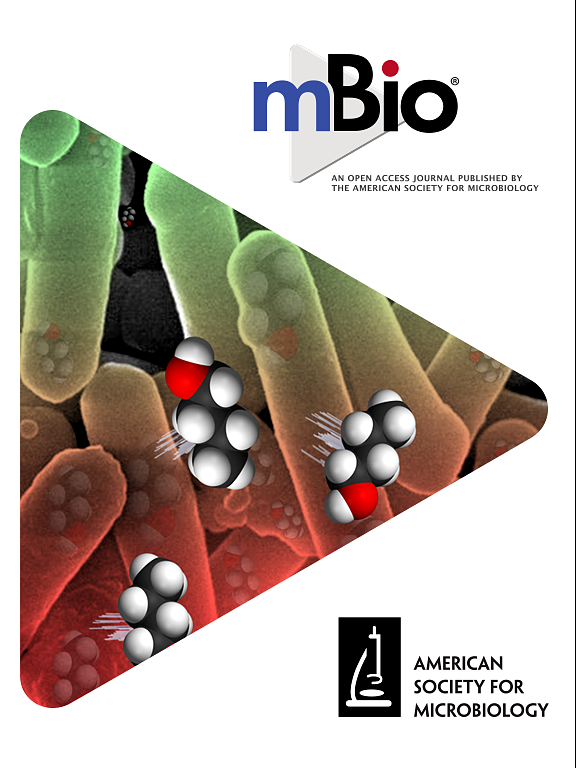开发 KSHV 疫苗平台和嵌合 MHV68-K-K8.1 糖蛋白,用于评估 KSHV 候选疫苗的体内免疫原性和有效性。
摘要
卡波西肉瘤相关疱疹病毒(KSHV)/人类疱疹病毒 8 是卡波西肉瘤、多中心卡斯特曼病和原发性渗出淋巴瘤的病原体。考虑到撒哈拉以南非洲地区高达 80% 的血清流行率,有效的疫苗对于预防 KSHV 感染至关重要。然而,由于缺乏支持 KSHV 感染的有效动物模型,疫苗的开发一直受到限制。小鼠疱疹病毒 68(MHV68)是一种天然的小鼠病原体,感染后可终生存活,是一种很有希望的 KSHV 感染模型。在这项研究中,我们开发了 KSHV 疫苗和携带 KSHV 糖蛋白的嵌合 MHV68,作为在小鼠模型中测试 KSHV 疫苗的替代挑战病毒。在 KSHV 病毒糖蛋白中,K8.1 是最丰富的包膜糖蛋白,具有最高的免疫原性。我们开发了两种 K8.1 疫苗:K8.1 mRNA-脂质纳米颗粒(LNP)疫苗和K8.126-87-铁蛋白(FT)纳米颗粒疫苗。这两种疫苗都能诱导免疫小鼠产生体液反应,而 K8.1 mRNA LNP 还能诱导 T 细胞反应。利用 BACmid 媒介同源重组,用 KSHV K8.1 基因替换 MHV68 M7(gp150)基因,生成嵌合型 MHV68-K-K8.1。MHV68-K-K8.1分别在感染小鼠的肺部和脾脏中建立了急性和潜伏感染。用 K8.1 mRNA LNP 或 K8.126-87-FT 免疫小鼠后,肺部的 MHV68-K-K8.1 滴度下降,而 MHV68 野生型(WT)滴度则没有下降。此外,K8.1 mRNA LNP免疫小鼠的MHV68-K-K8.1病毒再活化也显著降低。重要意义卡波西肉瘤相关疱疹病毒(KSHV)是一种流行的病毒,可在人体内形成终身持续感染,并与多种恶性肿瘤有关。虽然抗逆转录病毒疗法减少了艾滋病病毒感染者的卡波西肉瘤(KS)并发症,但 KS 仍然影响着艾滋病病毒控制良好的个体、未感染艾滋病病毒的老年男性和移植受者。尽管 KSHV 对人类健康有重大影响,但有关 KSHV 疫苗的研究一直很有限,主要原因是缺乏兴趣和合适的动物模型。本研究利用 mRNA 脂质纳米颗粒(LNP)和 FT 纳米颗粒这两个平台开发了 KSHV K8.1 疫苗,从而解决了这些难题。此外,研究人员还制作了嵌合病毒 MHV68-K-K8.1,以评估 KSHV 疫苗在体内的效力。接种 K8.1 mRNA LNP 或 K8.126-87-FT 后,MHV68-K-K8.1 滴度明显降低。开发有效的 KSHV 疫苗需要创新的方法来确保其安全性和有效性,尤其是对于免疫力低下的人群和医疗资源有限的人群。这项研究有可能成为未来开发 KSHV 疫苗的蓝图。Kaposi's sarcoma-associated herpesvirus (KSHV)/human herpesvirus 8 is an etiological agent of Kaposi's Sarcoma, multicentric Castleman's disease, and primary effusion lymphoma. Considering the high seroprevalence reaching up to 80% in sub-Saharan Africa, an effective vaccine is crucial for preventing KSHV infection. However, vaccine development has been limited due to the lack of an effective animal model that supports KSHV infection. Murine Herpesvirus 68 (MHV68), a natural mouse pathogen persisting lifelong post-infection, presents a promising model for KSHV infection. In this study, we developed KSHV vaccine and a chimeric MHV68 carrying the KSHV glycoprotein, serving as a surrogate challenge virus for testing KSHV vaccines in a mouse model. Among KSHV virion glycoproteins, K8.1 is the most abundant envelope glycoprotein with the highest immunogenicity. We developed two K8.1 vaccines: K8.1 mRNA-lipid nanoparticle (LNP) vaccine and K8.126-87-Ferritin (FT) nanoparticle vaccines. Both induced humoral responses in immunized mice, whereas K8.1 mRNA LNP also induced T cell responses. Using BACmid-mediated homologous recombination, the MHV68 M7 (gp150) gene was replaced with KSHV K8.1 gene to generate chimeric MHV68-K-K8.1. MHV68-K-K8.1 established acute and latent infection in the lungs and spleens of infected mice, respectively. Mice immunized with K8.1 mRNA LNP or K8.126-87-FT showed a reduction of MHV68-K-K8.1 titer but not MHV68 wild type (WT) titer in the lung. In addition, viral reactivation of MHV68-K-K8.1 was also significantly reduced in K8.1 mRNA LNP-immunized mice. This study demonstrates the effectiveness of two vaccine candidates in providing immunity against KSHV K8.1 and introduces a surrogate MHV68 system for evaluating vaccine efficacy in vivo.IMPORTANCEKaposi's sarcoma-associated herpesvirus (KSHV) is a prevalent virus that establishes lifelong persistent infection in humans and is linked to several malignancies. While antiretroviral therapy has reduced Kaposi's Sarcoma (KS) complications in people with HIV, KS still affects individuals with well-controlled HIV, older men without HIV, and transplant recipients. Despite its significant impact on human health, however, research on KSHV vaccine has been limited, mainly due to the lack of interest and the absence of a suitable animal model. This study addresses these challenges by developing KSHV K8.1 vaccine with two platforms, mRNA lipid nanoparticle (LNP) and FT nanoparticle. Additionally, chimeric virus, MHV68-K-K8.1, was created to evaluate KSHV vaccine efficacy in vivo. Vaccination of K8.1 mRNA LNP or K8.126-87-FT significantly reduced MHV68-K-K8.1 titers. Developing an effective KSHV vaccine requires an innovative approach to ensure safety and efficacy, especially for the immunocompromised population and people with limited healthcare resources. This study could be a potential blueprint for future KSHV vaccine development.

 求助内容:
求助内容: 应助结果提醒方式:
应助结果提醒方式:


